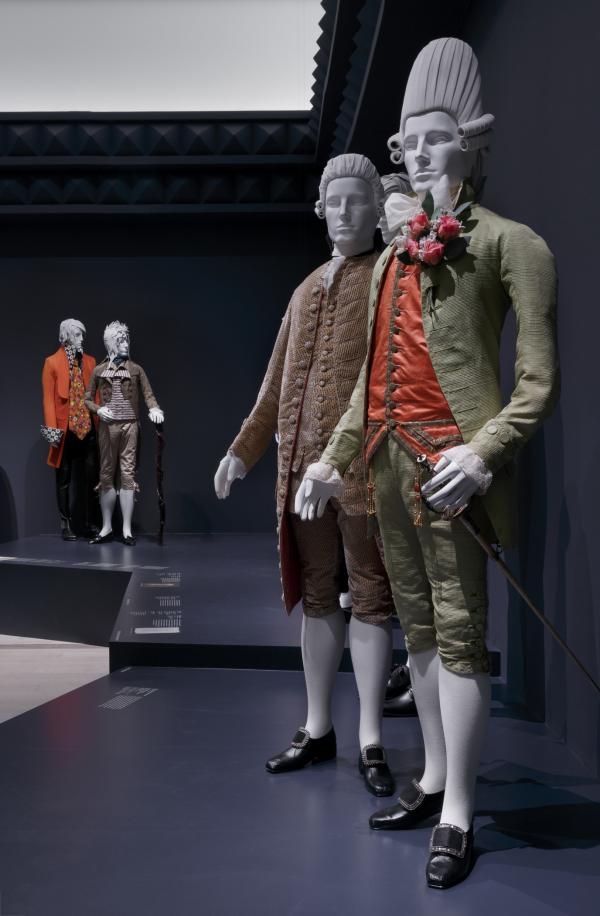One of the first major ensembles prepared for Reigning Men: Fashion in Menswear, 1715-2015 was the “macaroni male,” an archetype that we envisioned opening the exhibition from the very inception of the show. The term “macaroni” was used to classify hyper-fashionable British youths during the 1760s and ’70s who not only had a taste for Italian pasta (for which they are named) but also for wearing ostentatious, exaggerated Italian and French fashions outside the court and onto the streets of London.
When it came to researching, identifying, and mounting a macaroni ensemble—so recognizable in numerous printed satires of the period—we found that though strong research exists, no major museum had utilized collected costume objects to replicate the macaroni image on an exhibition mannequin. This lack of object-based research is predominately due to poor provenance on extant “macaronian” dress. However, there is a wealth of information of how his critics saw him (caricatures!), which is where we began in preparing our macaroni mannequin. Satirical prints by Mary and Mathew Darly consistently illustrate a suit made with a tight-fitting waistcoat and breeches worn with a short, fitted coat with collar. Accordingly, the cut of the suit became the basis for identifying existing macaronian garments in LACMA’s collection.
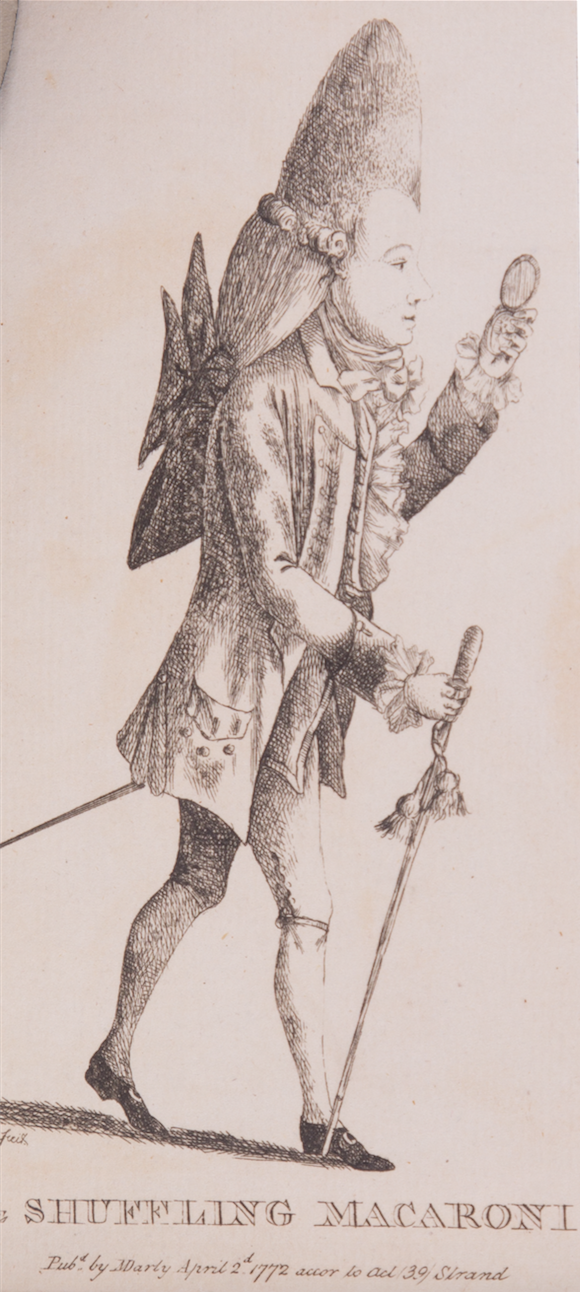
One extraordinary example that illustrates this peculiar cut is a green three-piece suit from Venice, Italy, circa 1770, tailored with extremely truncated tails and a high falling collar. Although the provenance of the ensemble is not English, its Italian history is compelling, as young men on Grand Tour (essentially an early practice of “study abroad” throughout Europe) were known to have suits made for them in continental cities to bring back home to England. I took a garment pattern from this green suit in order to visualize the differences in the construction of this “Italian-style” from typical British styles of the period. Additionally, a side-by-side comparison of LACMA’s dressed macaroni ensemble next to a velvet suit of a similar time period shows the considerable difference in overall silhouette and length of the coat tails. The slender, shortened style of the macaroni suit has led us to muse that perhaps it was the macaroni that conceived of the recent trend for the skinny suit.
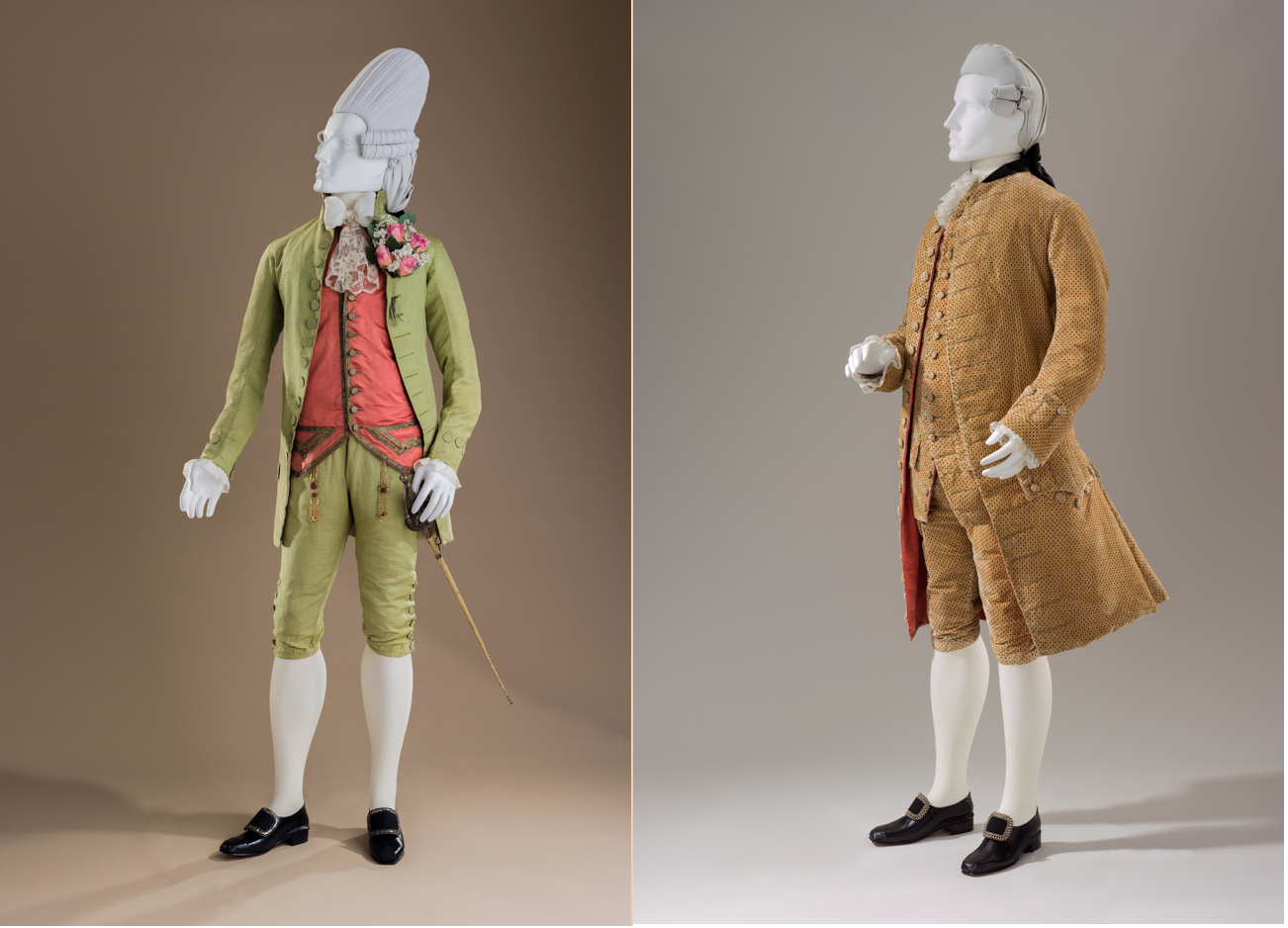
The green color is another fashionable element for the period, specifically for macaronis, as it was a laborious hue to create and required a double-dyeing of the fabric in blue and yellow. Hand-colored caricatures, such as those at the Lewis Walpole Library, consistently depict green garments. The color caricatures also revealed that elements of the macaroni three-piece suit frequently did not match, with the waistcoat or breeches in a color different from the coat. Thus, the waistcoat of the green suit ensemble was replaced with another object in our collection in order to make the mannequin more convincingly macaroni. This new vest is of a deep orange satin, trimmed with gold metallic passementrie and sequins. Like green, orange was favored by the macaroni, as seen in this colored caricature from Colonial Williamsburg, which obviously served as a source of inspiration and stylistic encouragement for our mannequin.
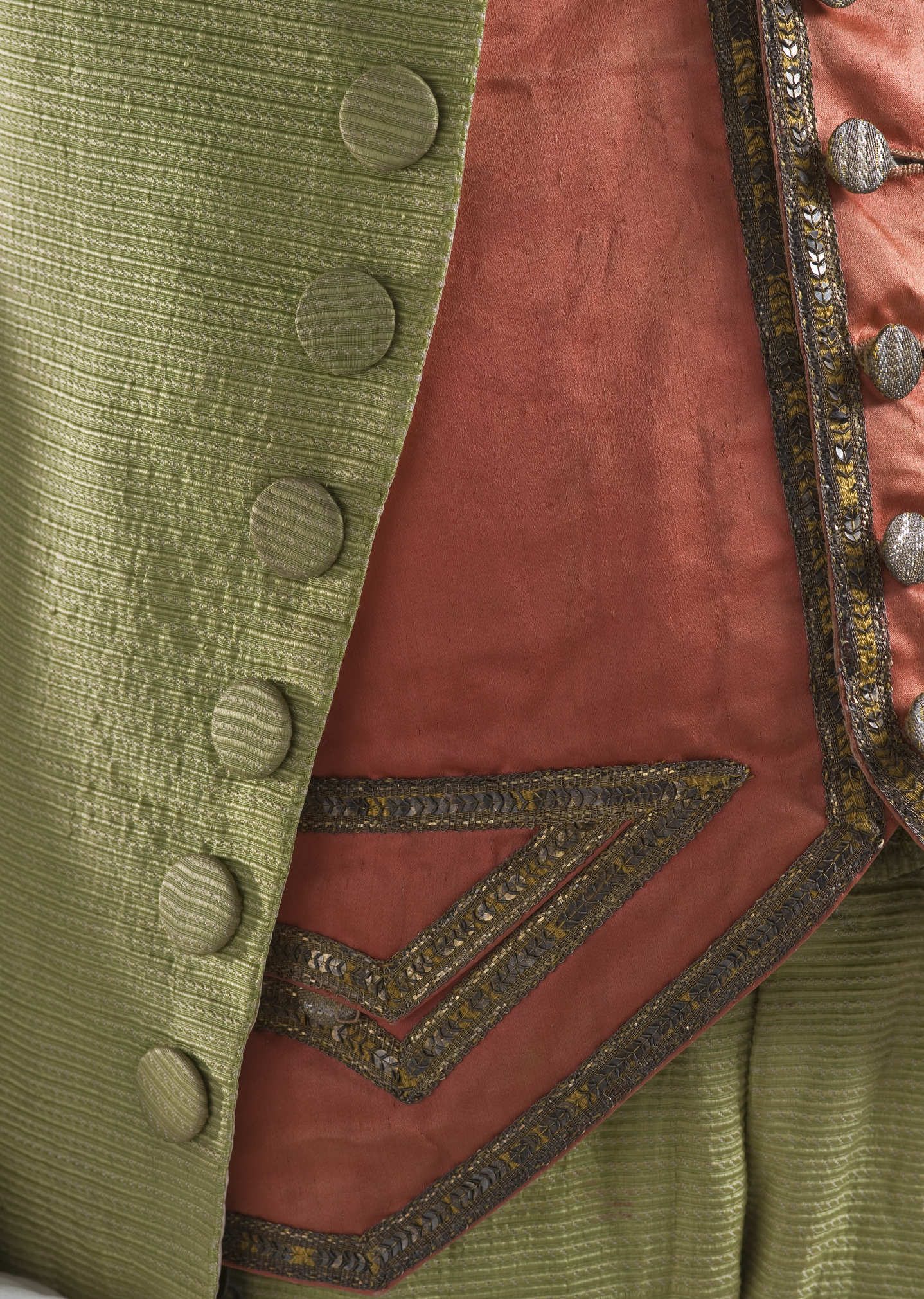
With the suit ensemble chosen, the appropriate wig and accessories were selected to finalize the look. Our recreated wig follows the exaggerated form and silhouette of the toupee and club style popular with macaronis, where the length of hair at the back was folded several times and then wrapped in the middle with a black ribbon. On top of the head is a tall toupee and side curls. Balancing the vastness of the wig is the nosegay, or corsage, a favorite accessory of flowers tucked into the buttonholes of the coat.
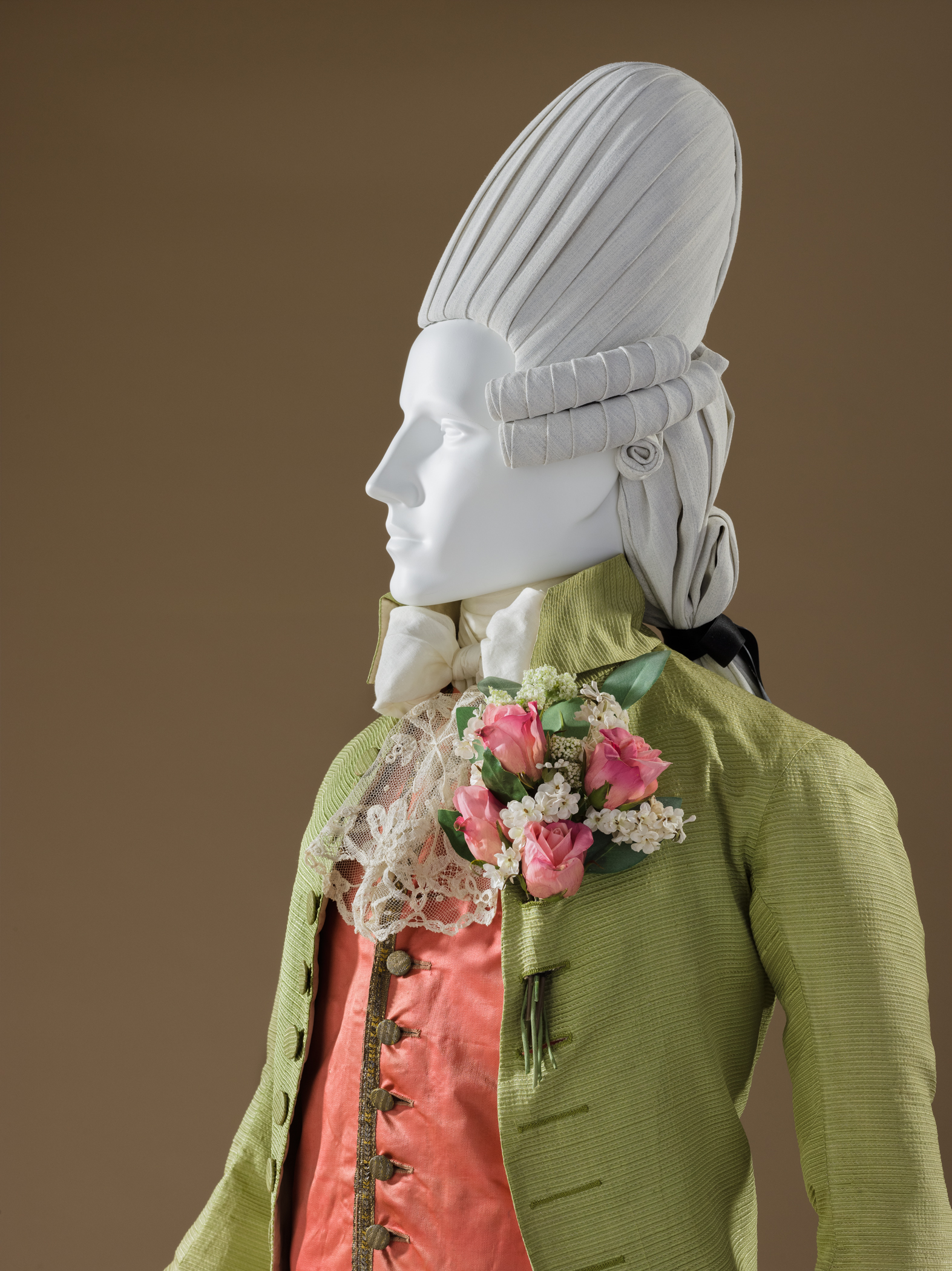
Also balancing the wig is the large linen bow and lace ruffles adorning the neck and chest of the mannequin, a hanger sword at the hip (thought to be an ironic fixture for these young men, who were considered too wimpy to actually use the hip-wear as a weapon), prop equipage watch fobs that gratuitously hang from both sides of the waist, and a pair of oversized shoe buckles at the feet.
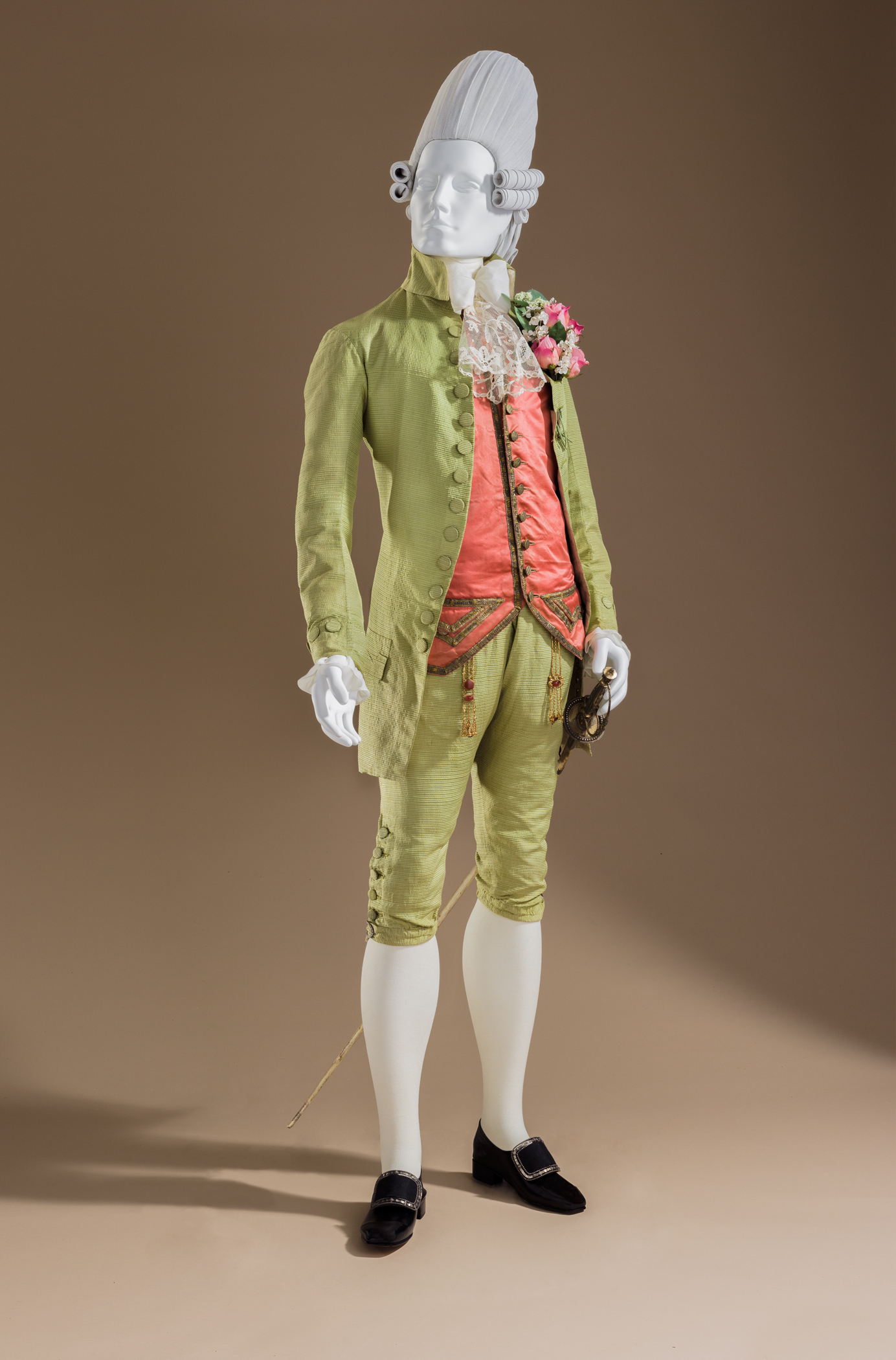
This exaggerated ensemble shows that conspicuous dressing—like many trends in menswear—is not new but rather cyclical. See this look among 200 others on display in Reigning Men: Fashion in Menswear, 1715-2015, on view until August 21, 2016.



